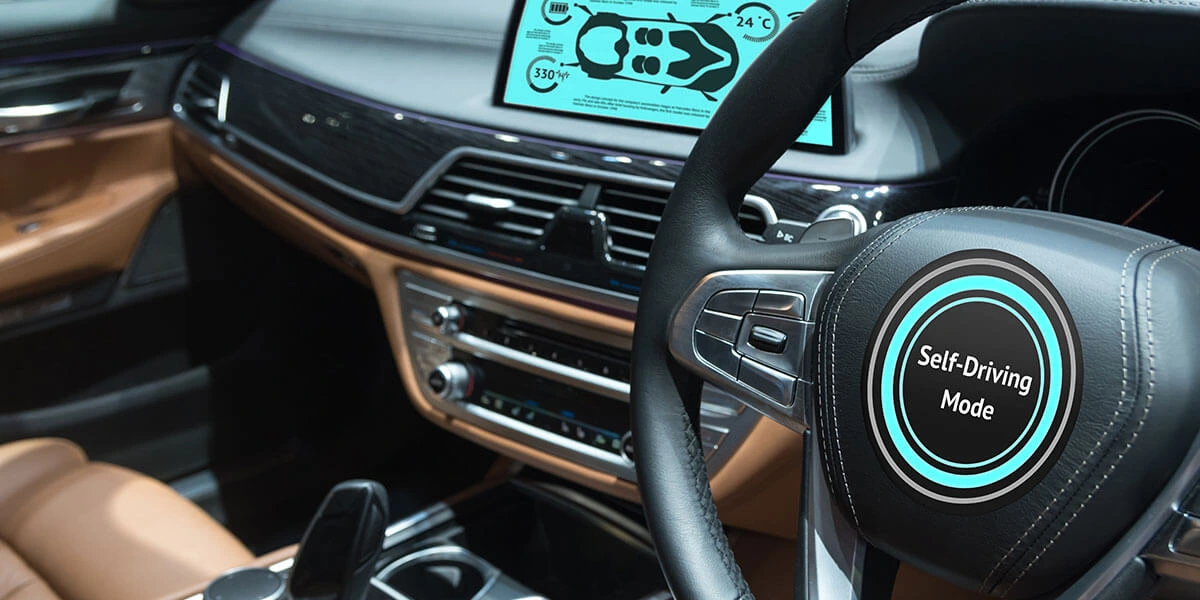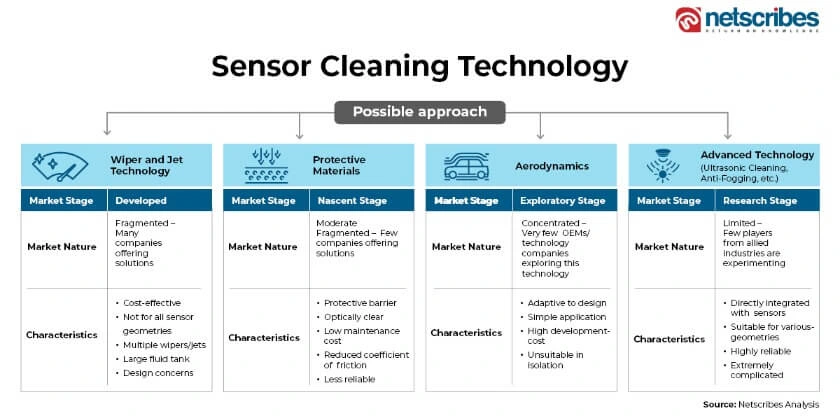Will convergence of sensor cleaning technologies ensure safe autonomous driving?

Road accidents claim the lives of about 1.35 million people every year. As autonomous vehicles (AV) become more prevalent, the urgency for effective road safety interventions, including better road infrastructure and advanced sensor cleaning systems will increase.
Smart cars rely on sensor systems to collect external data that triggers automated and autonomous functions. But any sensor pointed outwardly is subject to environmental conditions including dust, mud, bugs, and other road debris. Hence, it’s not enough to keep sensors clean before the vehicle starts moving. Because AVs rely on a range of sensors to operate, they need to stay spotless while in transit. The goal is to prevent situations in which a sensor might be obscured when making a turn or another maneuver, thus preventing accidents.
This is where sensor cleaning technologies play a crucial role.
How sensor cleaning technology enables safe autonomous functionality
The number of sensors in a vehicle is growing rapidly, driven in part by new safety regulations and the adoption of autonomous technologies in each vehicle class. The importance of clean sensors will only increase as vehicles move toward higher levels of automation. The aim is to pave the way for future mobility while ensuring people as well as vehicle safety.
Industry players can provide four types of sensor cleaning systems. These include wiper and jet technology, protective materials, passive/active aerodynamics, and experimental advanced technologies including ultrasonic cleaning and anti-fogging.
Here’s an overview of the market stage and the salient features of each system:

In what ways is the industry exploring sensor cleaning technology today?
Currently, OEMs and tier-I manufacturers are seeking feasible standalone sensor cleaning solutions for separate autonomous vehicle categories. To understand, here’s the breakdown of sensor technologies and vision systems in different level AV systems:
Models with adaptive cruise control and active lane-keep technology (Level 1 and 2 AV): 1x camera, 4x short-range radar, 1x long-range radar, 1x surround view system, 1x rear view system, and 1x automated driving control unit (ADCU)
Vehicles with conditional automation (Level 3 AV): 3x camera, 6x short-range radar, 3x long-range radar, 1x flash LiDAR, 1x surround view system, 1x rear view system, and 2x ADCU
Bona fide autonomous driving systems or a completely driverless environment (Level 4 and 5 AV): 3x camera, 6x short-range radar, 3x long-range radar, 4x flash LiDAR, 1x surround view system, 1x rear view system, 2x mirror view system, and 3x ADCU

However, isolating these systems presents a challenge because the resulting solutions aren’t as reliable and scalable as the industry demands. What can be done to address this problem?
Convergence of sensor cleaning technology
Relying on a single technology to address the sensor cleaning needs of an entire AV is not sustainable. Hence, by combining two or more solutions, cleaning sensors on the move will become more sustainable and effective.
Integrating wiper and jet technology with protective materials for Level 1 or 2 autonomous vehicles will significantly improve cleaning efficiency. Furthermore, using protective materials with passive/active aerodynamics systems in Level 3 AV will result in a protective and preventive solution. This can reduce the overall vehicle weight.
Similarly, an optimal combination of aerodynamics and advanced oil-free scroll technology will result in preventive, reactive, and high efficacy outcomes in a Level 4 and 5 autonomous vehicle. As a result, this will become the finest cleaning solution for the AV.
With the autonomous vehicles market poised to reach a tipping point by 2025, many ADAS and autonomous vehicle engineers are looking at new automotive sensor cleaning technologies. Moreover, the automotive sensor market is expected to reach 23.6 billion units globally by 2034.
Way forward
What has been the technological development in the sensor cleaning market so far? Which industry players are in the planning phase and which OEMs are ready to commercialize their sensor cleaning systems? Based on our in-house market research expertise, we’ve put together a whitepaper that gives you an overview of automotive sensor cleaning market economics.
The ‘State of automotive sensor cleaning technology’ whitepaper provides you with strategic insights into:
- Key players in the current automotive sensor cleaning ecosystem
- The current and future state of technology in this space
- Patent filing trend and publication landscape
Over the last two decades, Netscribes has helped leading automakers and OEMs identify new growth opportunities and understand the impact of new and emerging technologies. To learn how our market intelligence solutions can help you drive innovation, contact us.






